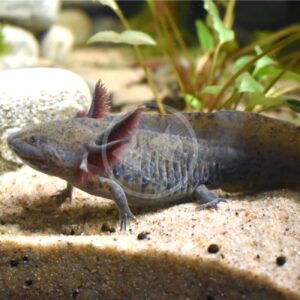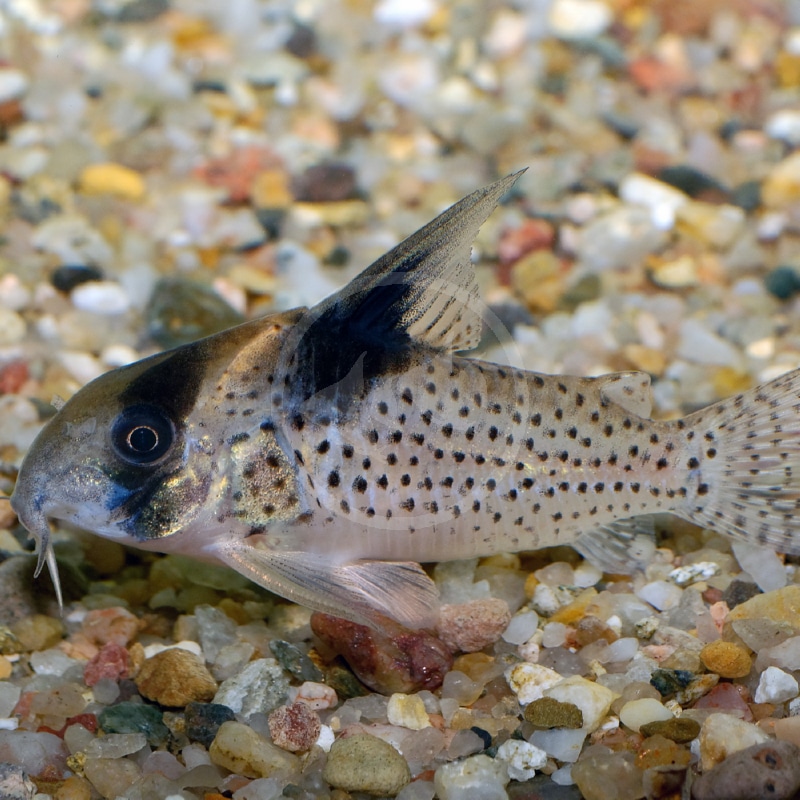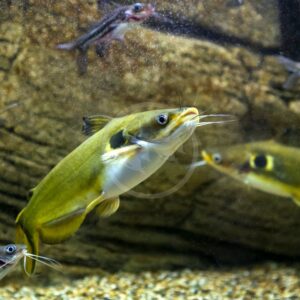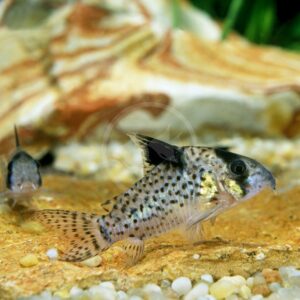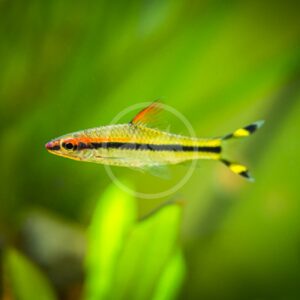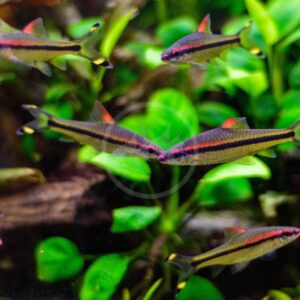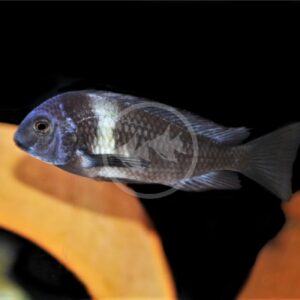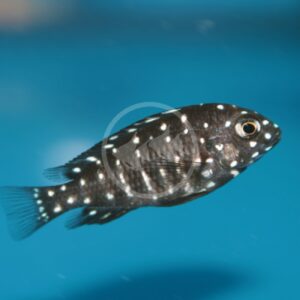CATFISH – CORYDORAS BLUE SPOTTED
Corydoras melanistius
$9.99
The Blue Spotted Corydoras, or Cory for short, are native to the coastal river systems of northeast South America. Their species epithet, melanistius, translates to ‘black sail’ which describes their dorsal fin perfectly. Corydoras, in general, are armored catfish that also have spines at the edge of their pectoral fins to deter predators from eating them. One of the more beautifully decorated corys available in the aquarium trade, the bodies of Blue spotted corys are an overall pearly white color that’s decorated with dark dots. Extremely similar in appearance to the Delphax Corydoras (C. melanistius), but note that the tail pattern of the Blue spotted cory is striped rather than spotted. Additionally, Blue spotted corys have 12 to 13 dorsal fin rays while Delphax corys only have seven; this subtle difference can be difficult to observe, however. A popular scavenging catfish for community and planted aquariums, Blue spotted corys are extremely peaceful and reach an adult size of approximately 2-1/4″. Corydoras are very social, preferring to be kept in groups of 4 or more individuals. There are little differences between male and female, however females can appear a little more robust.
Care Level: Moderate
Temperament: Peaceful
Live Plant Safe: Yes
General Description: The Blue Spotted Corydoras, or Cory for short, are native to the coastal river systems of northeast South America. Their species epithet, melanistius, translates to ‘black sail’ which describes their dorsal fin perfectly. Corydoras, in general, are armored catfish that also have spines at the edge of their pectoral fins to deter predators from eating them. One of the more beautifully decorated corys available in the aquarium trade, the bodies of Blue spotted corys are an overall pearly white color that’s decorated with dark dots. Extremely similar in appearance to the Delphax Corydoras (C. melanistius), but note that the tail pattern of the Blue spotted cory is striped rather than spotted. Additionally, Blue spotted corys have 12 to 13 dorsal fin rays while Delphax corys only have seven; this subtle difference can be difficult to observe, however. A popular scavenging catfish for community and planted aquariums, Blue spotted corys are extremely peaceful and reach an adult size of approximately 2-1/4″. Corydoras are very social, preferring to be kept in groups of 4 or more individuals. There are little differences between male and female, however females can appear a little more robust.
Diet Requirements: Blue spotted corys are omnivores. A diet made up of various high quality vegetable based and protein based flake foods, sinking micro pellet foods and bug bites are ideal, in addition to offering frozen foods such as bloodworms, brine shrimp and daphnia. Variety is the spice of life in order to maintain color, immune function and longevity of your fish.
Care Requirements: An established minimum 20 gallon aquarium is ideal for a small group of Blue spotted corys, but they are versatile and can be added to even much larger aquariums. Unlike some of the other species in Corydoras, Blue spotted corys should not be added into a biologically immature aquarium as they are sensitive to nitrite and ammonia. Additionally, weekly water changes are necessary to keep water parameters favorable (Nitrates < 20 ppm) as Blue spotted corys are more sensitive to deteriorating water parameters. The aquarium should be aquascaped with rocks and driftwood for coverage and places to hide, in addition to generous vegetation (artificial or live, but live is preferred). Corydoras require a sandy to fine substrate; too coarse of a substrate could cause injury to their barbels. Corydoras are opportunistic scavengers, making them very beneficial to have to forage for extra food of all kinds that has fallen to the substrate. Given their size and temperament, Blue spotted corys rarely conflict with other fish but can be easily bullied by more semi-aggressive bottom-dwelling species or more aggressive catfish species. Choose tank mates accordingly, but some common compatible options include tetras, rasboras, angelfish, dwarf cichlids, and livebearers. Different species of Corydoras catfish can be mixed with success. Recommended water conditions, 74-82° F, KH 2-15, pH 6.0-7.0.
Purchase Size: Medium: 1” to 1-1/4”
Note: Your item may not look identical to the image provided due to variation within species. Purchase sizes are approximate.
Dry goods orders are shipped via US Postal Service or UPS to the address provided at checkout based on the selection made in your website shopping cart. Product is carefully packed to help prevent any damage during shipping. Once processed you will receive a shipment notification via email with tracking number, and delivery notification. Please allow 48 hours for processing after your order is placed.
Perishable items (i.e. live plants, refrigerated/frozen foods) are shipped via US Postal Service 2-3 day to the address provided at checkout for a $25.00 flat rate charge. Items are packed with secure packing material and heat, cold, or Cryo packs as needed to maintain safe temperatures during transit. If one or more perishable items are in the shopping cart at checkout the $25.00 perishable shipping charge will automatically appear and need to be selected. Once processed you will receive a shipment notification via email with tracking number. Please allow 48 hours for processing after your order is placed.
Livestock (i.e. fish, invertebrates, coral) are shipped via UPS Overnight to the address provided at checkout for a $55.00 flat rate charge. Livestock is packed in insulated styrofoam boxes with secure packing material and heat, cold, or Cryo packs as needed to maintain safe temperatures during transit. If one or more livestock items are in the shopping cart at checkout the $55.00 livestock shipping charge will automatically appear and need to be selected. Livestock is shipped Monday through Wednesday ONLY (no weekend delivery is available) weather permitting, and we reserve the right to delay shipping until conditions are appropriate for safe arrival. Once your order is placed we will contact you to arrange the best shipping date based on these criteria. Someone must be available to receive the livestock order on the first delivery attempt. Once processed you will receive a shipment notification via email with tracking number. Please allow 48 hours for processing after your order is placed.
For mixed dry goods/perishable & livestock orders items will be shipped via their corresponding shipping methods outlined above. Dry goods will be shipped via US Postal Service or UPS based on your selection and checkout, while livestock will ship via UPS Overnight for a $55.00 flat rate charge. You will receive separate notifications and tracking numbers for the dry goods and livestock. Please note due to different carriers and shipping methods dry goods and livestock may arrive on different days.
Related products
BARB – DENISONII / ROSELINE SHARK
Sahyadria denisonii
$9.99 – $79.99
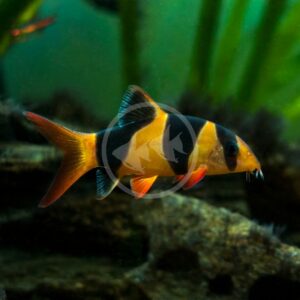
LOACH – CLOWN
Chromobotia macracanthus
$16.99 – $199.99
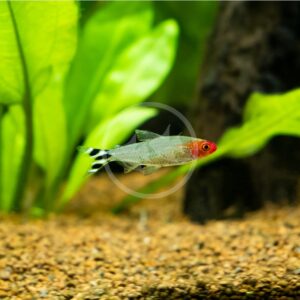
TETRA – RUMMYNOSE
Hemigrammus rhodostomuss
$9.99
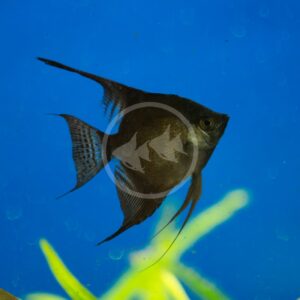
ANGELFISH – FW BLACK
Pterophyllum scalare
$6.99 – $49.99
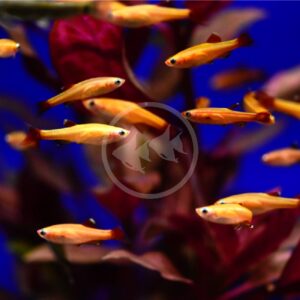
MINNOW – WHITE CLOUD MOUNTAIN GOLD
Tanichthys albonubes
$5.99
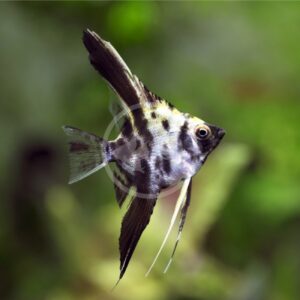
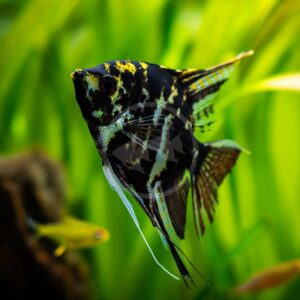
ANGELFISH – FW MARBLE
Pterophyllum scalare
$6.99 – $99.99
